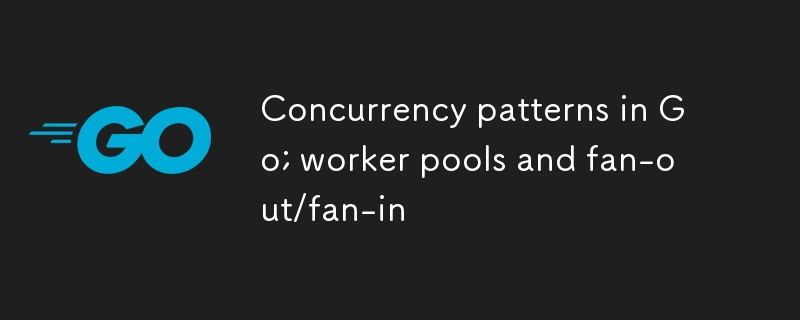

Go is known for its exceptional concurrency model, but many developers focus only on goroutines and channels. However, concurrency patterns like worker pools and fan-out/fan-in provide real efficiency.
This article will get into these advanced concepts, helping you maximize throughput in your Go applications.
Concurrency allows programs to perform tasks efficiently, especially when dealing with tasks like I/O operations, web requests, or background processing. In Go, goroutines provide a lightweight way to manage thousands of concurrent tasks, but without structure, you can run into bottlenecks. That’s where worker pools and fan-out/fan-in patterns come in.
Worker pools allow you to limit the number of goroutines by assigning tasks to fixed "workers." This prevents oversubscription, reduces resource consumption, and makes task execution manageable.
package main
import (
"fmt"
"sync"
"time"
)
func worker(id int, jobs <-chan int, results chan<- int, wg *sync.WaitGroup) {
defer wg.Done()
for j := range jobs {
fmt.Printf("Worker %d started job %d\n", id, j)
time.Sleep(time.Second) // Simulate work
fmt.Printf("Worker %d finished job %d\n", id, j)
results <- j * 2
}
}
func main() {
jobs := make(chan int, 100)
results := make(chan int, 100)
var wg sync.WaitGroup
// Start 3 workers
for w := 1; w <= 3; w++ {
wg.Add(1)
go worker(w, jobs, results, &wg)
}
// Send jobs
for j := 1; j <= 5; j++ {
jobs <- j
}
close(jobs)
// Wait for workers to finish
wg.Wait()
close(results)
for result := range results {
fmt.Println("Result:", result)
}
}
In this example:
The fan-out/fan-in pattern allows multiple goroutines to process the same task, while fan-in gathers the results back into a single output. This is useful for dividing tasks and then aggregating results.
package main
import (
"fmt"
"sync"
"time"
)
func workerFanOut(id int, tasks <-chan int, wg *sync.WaitGroup) {
defer wg.Done()
for task := range tasks {
fmt.Printf("Worker %d processing task %d\n", id, task)
time.Sleep(time.Second) // Simulate work
}
}
func main() {
var wg sync.WaitGroup
tasks := make(chan int, 10)
// Fan-out: Launch multiple workers
for i := 1; i <= 3; i++ {
wg.Add(1)
go workerFanOut(i, tasks, &wg)
}
// Send tasks
for i := 1; i <= 9; i++ {
tasks <- i
}
close(tasks)
// Wait for workers to finish
wg.Wait()
fmt.Println("All tasks are processed.")
}
In the code above:
Concurrency patterns can be applied to optimize web servers, batch processing systems, or I/O-bound applications. Using patterns like worker pools and fan-out/fan-in ensures optimal resource usage without overwhelming system capacity.
Next Steps to increase your knowledge:
- Explore how these patterns can be extended to other concurrency challenges.
- Build out a real-time web service with a worker pool managing requests.
The key to success in Go’s concurrency is structure. Mastering these concurrency patterns will level up your Go skills and help you write highly performant applications.
Stay tuned for more insights into Go in the next post!
You can support me by buying me a book :)
The above is the detailed content of Concurrency patterns in Go; worker pools and fan-out/fan-in. For more information, please follow other related articles on the PHP Chinese website!




